When William, Duke of Normandy, landed on the East Sussex coast on 28th September 1066 with a fleet of 700 ships containing an army, he changed the course of English history forever.
Going on to win the Battle of Hastings against King Harold just days later, William the Conqueror, as he became known, built a series of motte and bailey castles across England to establish his rule over the Anglo-Saxon people.
From hastily erected earthen mounds topped with wooden palisades to more permanent stone structures, the term motte and bailey derive from the Old French language, motte meaning ‘turfy’ and bailey meaning low yard, in other words, a mound with enclosed land.
The layout of both the earlier and later types of the castle remained much the same, the wooden enclosed courtyard being replaced by stone walls and the motte being replaced by the stone keep.
It is thought that the Normans built 500 motte and bailey castles, followed by the motte and keep castles in the first 20 years after the Battle of Hastings… and 90 of these historic Norman Castles still exist in England today!
Disclaimer: This post contains affiliate links. This means that should you click on certain links, and then subsequently purchase a product, I will receive a small commission.
Map of Norman Castles in England

The Best 25 Norman Castles to Visit in England
1. Pevensey Castle

Located in East Sussex on a peninsula that existed at that time, Pevensey Castle was the first one in England that William the Conqueror erected after his arrival onto English soil on the 28th of September, 1066. Initially built as a temporary castle to shelter his troops, the hasty construction made use of an older Roman fortification with a ditch separating the castle from the mainland.
It is thought that William the Conqueror’s eldest son, Robert Curthose late, gave Pevensey Castle its permanent defenses making this a full-scale Saxon Shore Fort with the Roman perimeter wall refortified and two baileys created within. Two-thirds of the Normal towered walls of this impressive castle ruin still stand today.
Where: Pevensey, East Sussex
Open for visit: Yes, check here for more information.
2. Dover Castle
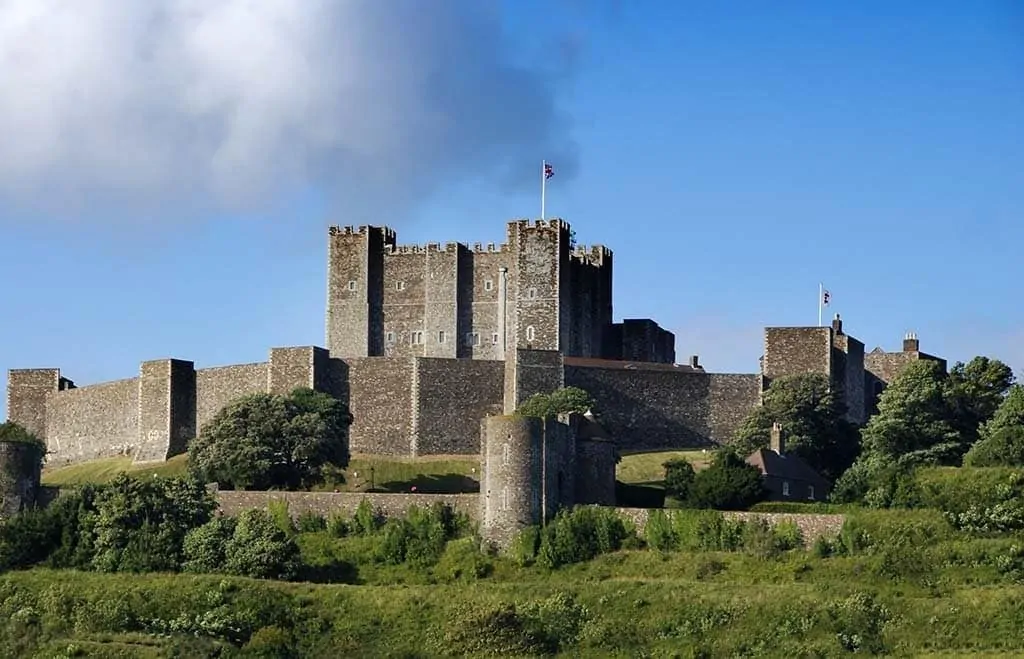
The second castle built by William the Conqueror, Dover Castle, was the first motte and bailey castle erected immediately after the Battle of Hastings in 1066 on the site of a former Iron Age hill settlement.
Little of the original ringwork defensive wall exists today, Dover Castle having been adapted and rebuilt first by King Henry II in the 1180s and later by King John and Henry III.
However, visitors to Dover Castle can get a taste of Norman heritage thanks to the interior of the great stone keep, which was built for Henry II and recreated to look like the interior of an authentic Norman castle.
Where: Dover, Kent
Open for visit: Yes. – Check the English Heritage website for details.
Click here to book your ticket to Dover Castle.
3. Rochester Castle
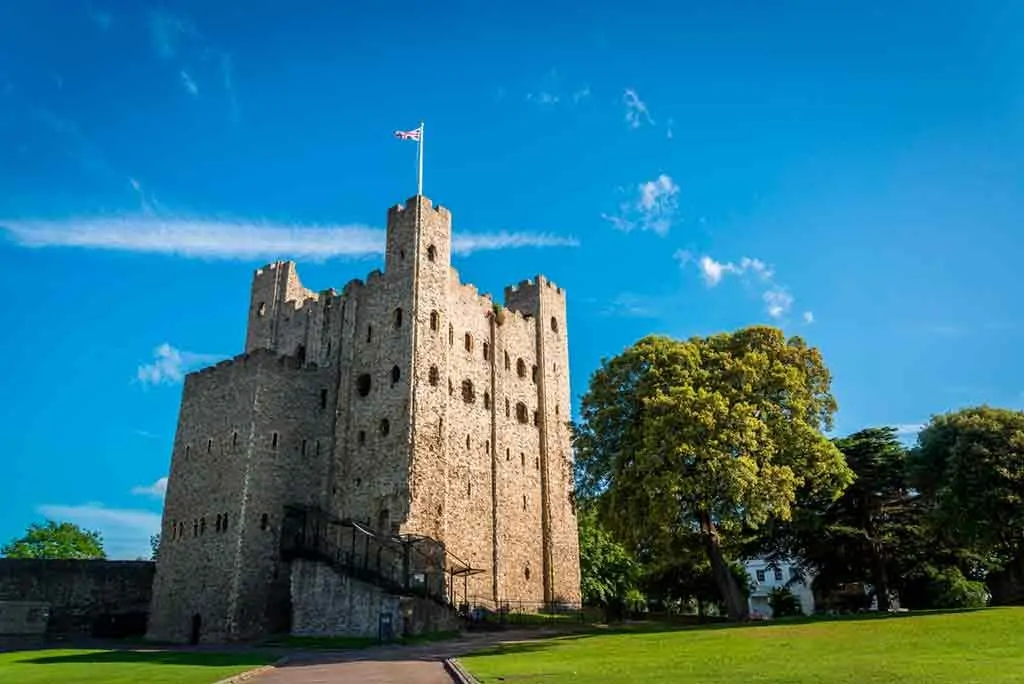
Despite standing in ruin, this is one of the most impressive Norman castles to be seen in England today, with its Norman perimeter walls remaining intact along with the later addition of the iconic 113 feet tall Norman tower-keep.
The building of Rochester Castle was started in 1087 by Gundolf, Bishop of Rochester, one of William the Conqueror’s finest architects who went on to design the Tower of London.
Strategically located beside London Road, this castle controlled an important crossing point on the River Medway; rebuilt twice, it remained a viable castle right through until the 16th century.
Where: Rochester, Kent
Open for visit: Yes, check here for more information.
4. Colchester Castle

One of William the Conqueror’s original three Royal castles, the building of Colchester Castle was started in 1076 under the supervision of Gundulf, Bishop of Rochester.
Built upon the ruins of the Roman Temple of Claudius (Colchester being the first Roman capital of Britain), William the Conqueror ordered a stone castle to be built at this strategic location between East Anglia and London but there was a lack of local stone of high enough quality, so the builders plundered Roman Colchester in order to build the great keep, the largest in England.
Today the castle, with its mostly intact Keep, contains a museum with interactive displays and many exhibits.
Where: Colchester, Essex
Open for visit: Yes. Check here for more information.
5. Alnwick Castle

This castle, the second largest inhabited castle in England, was founded as a motte and bailey style castle by Yves de Vescy in 1096 following the Norman conquest as a way to protect the border whilst symbolizing the power of the new Norman barons.
Built with two baileys, a 7 meters deep moat, and 2-meter-thick walls, it was attacked by William the Lion, King of Scotland, in 1173 and 1174 but was not captured. Rebuilt and renovated a number of times, Alnwick Castle has been the home of the Percy Dukes of Northumberland since the 11th century; this noble family having arrived from France with William the Conqueror, their ancestors still owning the castle today.
Where: Alnwick, Northumberland
Open for visit: Yes. Check here for more information.
Click here to buy your tickets to Alnwick Castle
6. Durham Castle

Built under the orders of William the Conqueror in 1072, soon after the Normans entered the North of England, Durham Castle was vital in its defense against the Scots and Danes and its control of the English rebellions. It is unclear whether Durham Castle was first built using wood or stone, but it is thought to have been built upon an older Anglo-Saxon fort.
Initially, the building of this great castle was undertaken by Waltheof, Earl of Northumberland, but he rebelled against William the Conqueror and was executed in 1076. The castle then fell under the control of Walcher, who purchased the earldom, becoming the first Prince-Bishop of Durham.
Durham Castle was rebuilt and extended multiple times by the Bishops of Durham but substantial elements of the Norman architecture still survive today with the chapel, undercroft of the great hall, 2 Norman arches, and the Norman range found on the north side of the courtyard.
Where: Durham, Northumberland
Open for visit: Yes, guided tours usually take place 3-4 times daily. Check here for more information.
Check out the best castles to visit in Durham.
7. Lincoln Castle
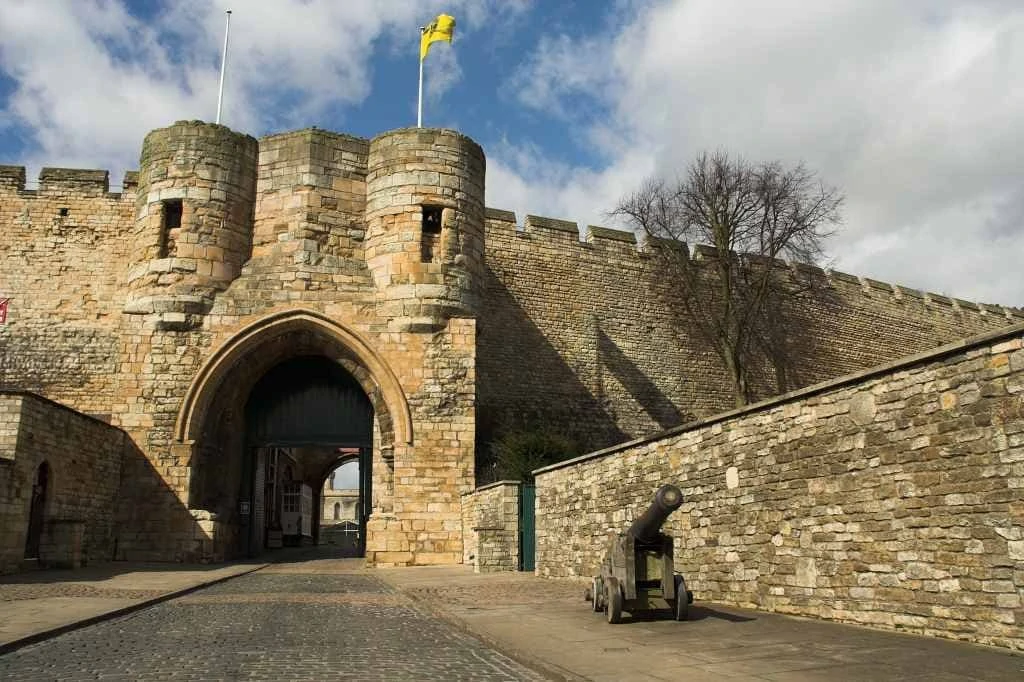
In 1067 William the Conqueror passed through Lincoln on his way North. He noted the strategically placed old Roman fortress located atop a hill overlooking the River Witham as well as the city (which had the old Roman road between London and York running through it) and ordered a new castle to be built on the strategically important site a year later, the building of the castle destroying 166 plots of land which was initially used to garrison William’s army.
Unusual in its design as it features two mottes instead of one, Lincoln Castle went on to be the focal point of 2 battles that changed the course of English history forever.
Where: Lincoln, Lincolnshire, East Midlands
Open for visit: Yes. Check here for more information.
You might also be interested in: The best Castles in Lincolnshire.
8. Oxford Castle
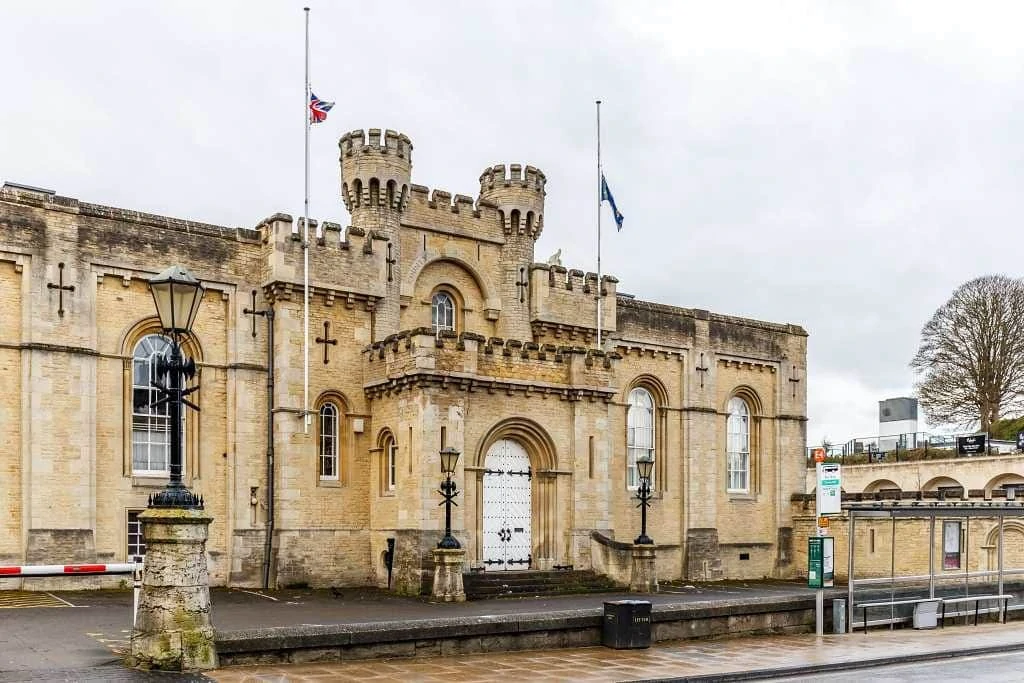
Founded in 1071 by Norman Baron Robert D’Oilly, who fought alongside William the Conqueror in 1066, the site for Oxford Castle was chosen for its strategic position near the river whilst making use of the already existing Saxon town defenses. Originally built as an earth and timber motte and bailey castle with a moat.
Oxford Castle was later rebuilt from stone and expanded over the ages. Visitors can still see the 20 meters tall Norman Motte, aka the mound, the Norman chapel crypt, as well as climb to the top of the Norman St George’s Tower.
Where: Oxford, Oxfordshire
Open for visit: Yes, Oxford castle is a guided tour only. Check here for more information.
Click here to buy your tickets to Oxford Castle.
9. Totnes Castle
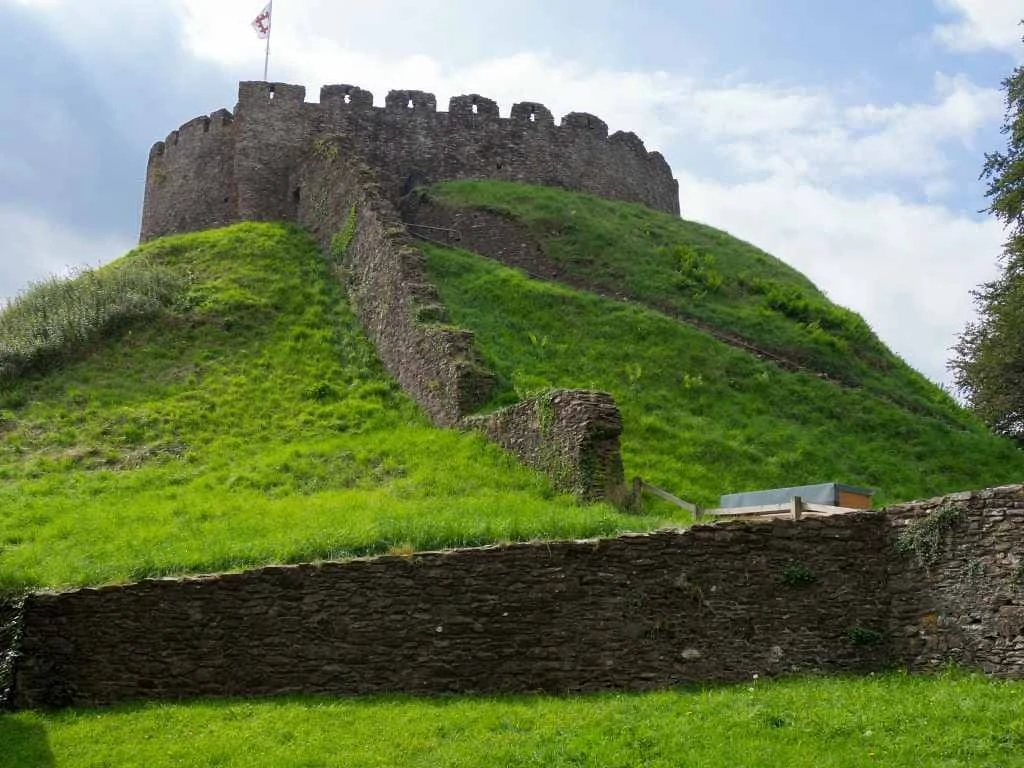
One of the best and least altered traditional motte and bailey castles in England, Totnes Castle was founded by Norman Knight Judhael of Brittany shortly after the 1066 conquest.
Judhael had been granted estates around Devon by William the Conqueror due to his support, and Totnes Castle was initially built as an earth and timber motte and bailey castle, the mound rising 17.5 meters high with a circumference of 56 meters – an impressive site meant to instill Norman authority across the prestigious Anglo-Saxon market town after a revolt against Norman rule.
The castle was later rebuilt out of stone when Henry I took to the throne though what we see today mostly dates from the reign of Edward II.
Where: Totnes, Devon
Open for visit: Yes. Check here for more information.
You might also be interested in: The best castles in Devon.
10. Ludlow Castle

One of the first stone motte and bailey castles to be built in England after the Norman conquest, Ludlow Castle was a Welsh Border stronghold thought to have been founded by Walter de Lacy sometime around 1085 though an earlier wooden castle may have been built by Norman Joce de Dinham.
Though the castle was extensively remodeled during the Middle Ages and today stands in ruin, visitors can still see the remains of the Norman chapel that stands within the inner bailey, the West door with chevron moldings and circular nave the best remaining pieces of the chapel from Norman times.
Where: Ludlow, Shropshire
Open for visit: Yes, check here for more information.
You might also like to read about more interesting castles in Shropshire.
11. Canterbury Castle
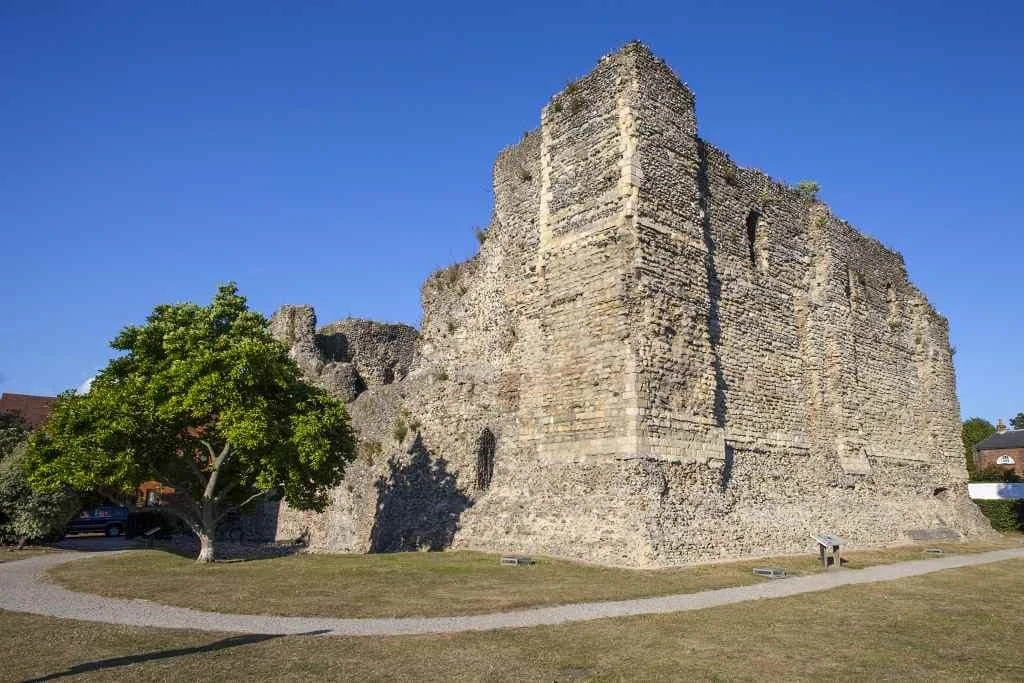
Two castles were built in Canterbury by the Normans, who made use of the fortified Roman town walls. The first, in 1066, was a temporary earth and timber motte and bailey castle on the site of an older fortification at Dane John, the mound still visible today within Dane John Gardens.
The later stone castle was constructed between 1070-1086 at a new site opposite Worth Gate, with a large stone keep finished in the reign of King Henry I, which became 1 of 3 Royal Castles in Kent. The stone castle stands in ruin today, with only the outer walls visible.
Where: Canterbury, Kent
Open for visit: Westgate can be visited, but the castle grounds are currently closed.
12. Launceston Castle
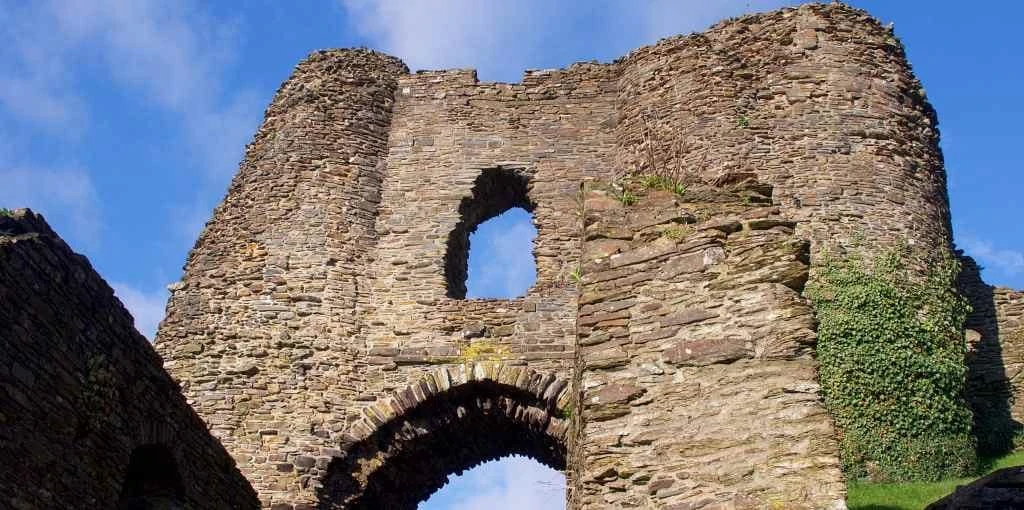
Thought to have been built in 1068, following the capture of Exeter in the same year, Launceston Castle was initially built as an earth and timber castle by William the Conqueror’s half-brother Robert, Count of Mortain.
Built to control the area between Bodmin Moor and Dartmoor, as well as access into Cornwall over the Polson ford, Launceston Castle was later rebuilt in stone by Richard, Earl of Cornwall, at which point the motte was enlarged with outer gatehouses and a central round tower.
Where: Launceston, Cornwall
Open for visit: Yes, check here for more information.
13. Restormel Castle
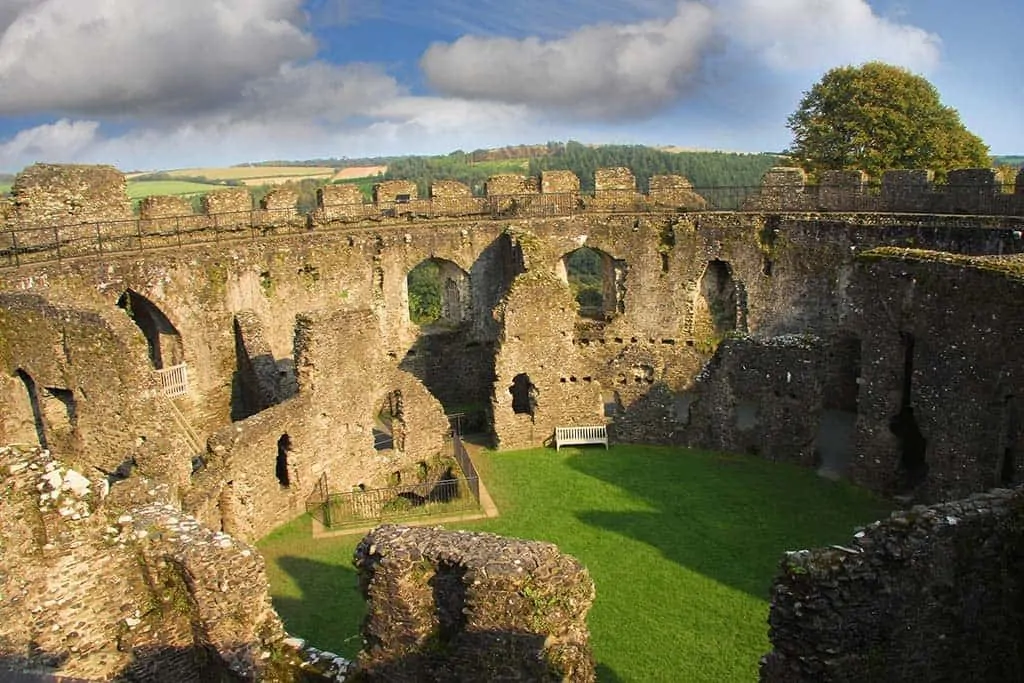
Thought to have been founded around 1100 by the Norman nobleman Robert, Count of Mortain, who was the 2nd Earl of Cornwall and half-brother of William the Conqueror, this spectacular stone ringwork and bailey castle (which originally would have been an earth and timber motte and bailey castle) is 1 of 4 chief Norman castles in Cornwall.
Built to control the main crossing point over the River Fowey, and to suppress people in the South West following the Norman invasion, little is known about the castle’s earliest history prior to its rebuild from stone in the late 13th century.
Where: Lostwithiel, Cornwall
Open for visit: Yes, check here for more information.
14. Pontefract Castle
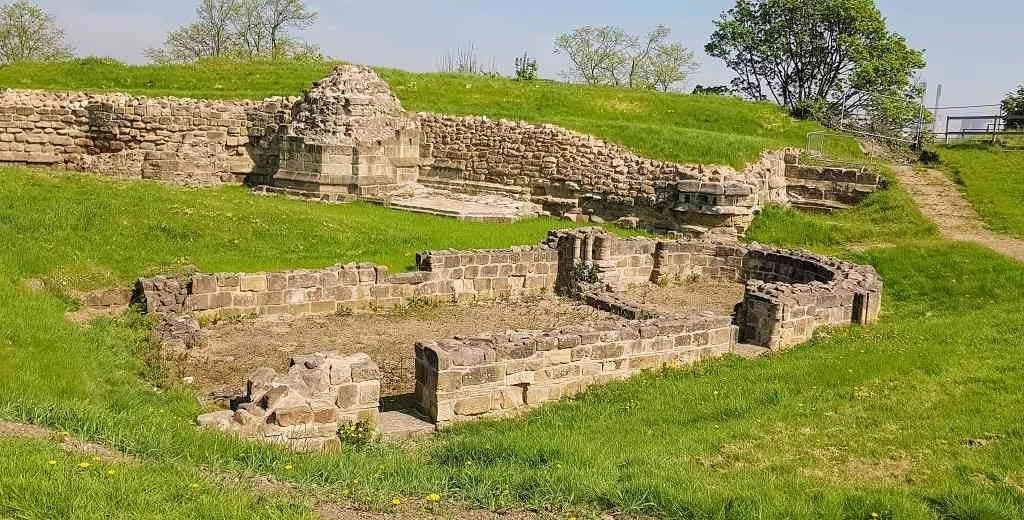
A temporary wooden fortification was built here around 1070, later rebuilt as an earth and timber motte and bailey castle by Ilbert de Lacy in the 1080s on the site of an Anglo-Saxon manor and burial ground.
Built to control the Anglo-Saxon population and become ‘the key to the North’ due to its location, Pontefract Castle went on to become the most formidable Royal castle in the North of England.
Where: Pontefract, West Yorkshire
Open for visit: Yes, check here for more information.
Check out the best castles to visit in Yorkshire.
15. Lydford Castle
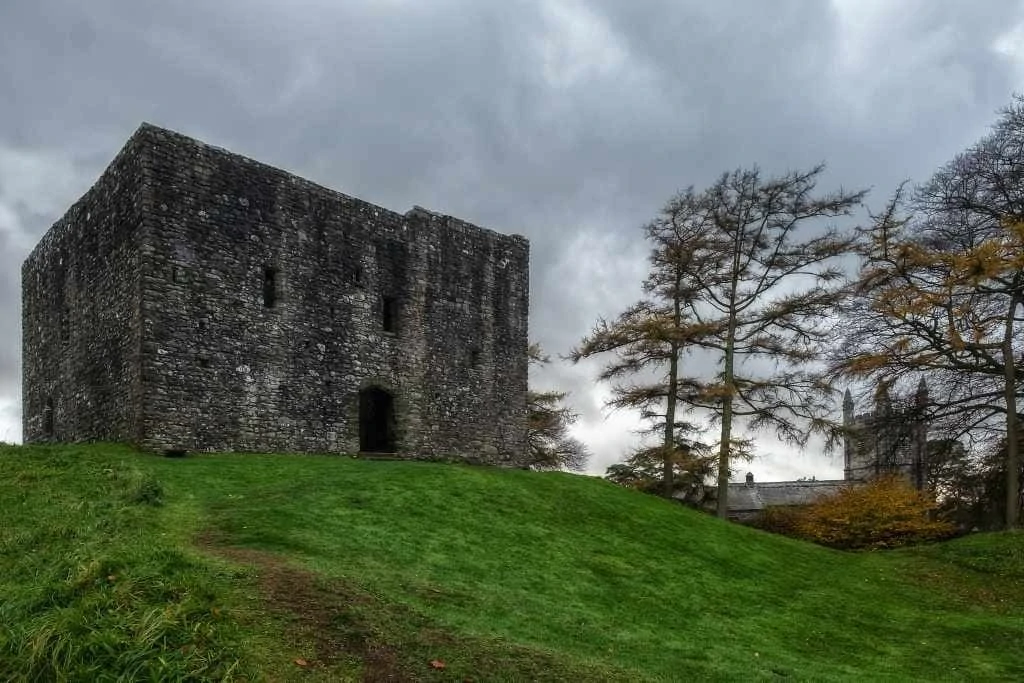
William the Conqueror ordered a small earth and timber castle to be built at this prosperous Anglo-Saxon town soon after the siege and capture of Exeter in 1068.
Located on the South-West tip of Lydford town, then known as Hlidan, the earthworks still remain of the original motte and bailey castle, which had five wooden buildings contained within a moon-shaped rampart with a ditch.
A stone tower was later built beside the original castle allowing visitors to see a rare example of an early Norman earthworks castle or what remains of its footprint.
Where: Lydford, Devon
Open for visit: Yes, check here for more information.
16. Richmond Castle

Initially built by Alan Rufus, aka Alan the Red, in the 1070s, Richmond Castle is one of the complete examples of an early Norman castle made from stone. Built to control and subdue the North of England, Richmond Castle was later expanded by Alan Rufus’ cousin, Conrad, who built the castle’s Keep. Today, visitors to the castle ruins can follow the castle’s history from Norman times onwards at the permanent exhibition center.
Where: Richmond, North Yorkshire
Open for visit: Yes, check here for more information.
17. Lewes Castle
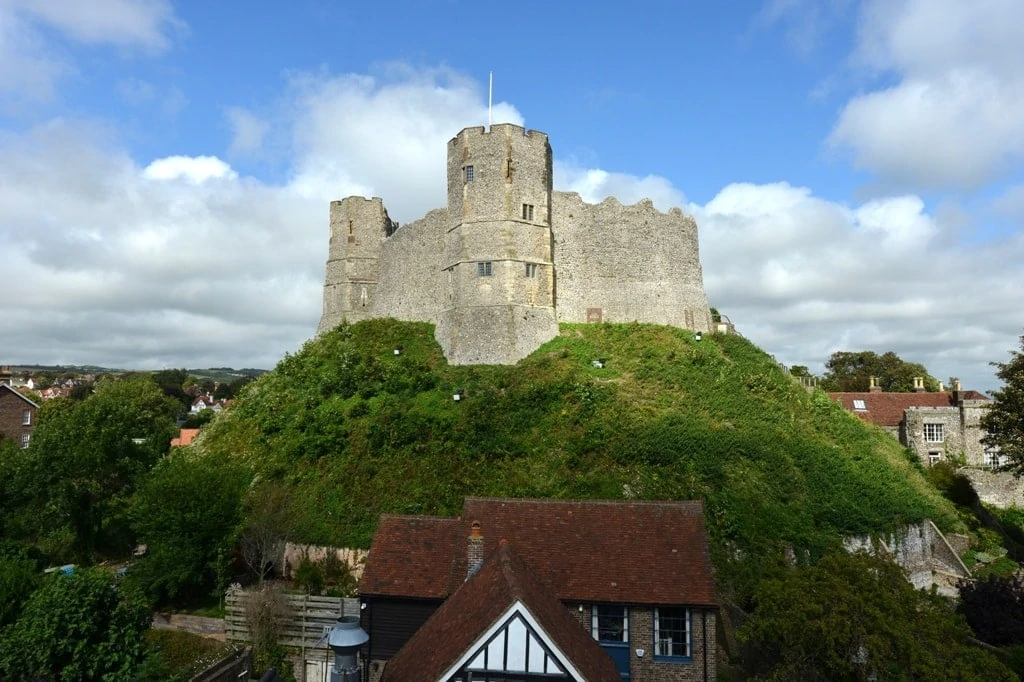
One of the first castles to be built after the Battle of Hastings, Lewes Castle was originally an earth and timber motte and bailey castle built by William de Warenne between 1068-1070.
Then, for reasons unknown to us today, a second motte was built in 1100, directly opposite the first motte. Later rebuilt from stone by Hamelin de Plantagenet, the bailey of Lewes castle can still be seen today, as can the second motte, which contains the surviving castle ruins; little remaining on top of the first motte, which today simply resembles a small hill.
Where: Lewes, East Sussex
Open for visit: Yes. Check here for more information.
18. Longtown Castle
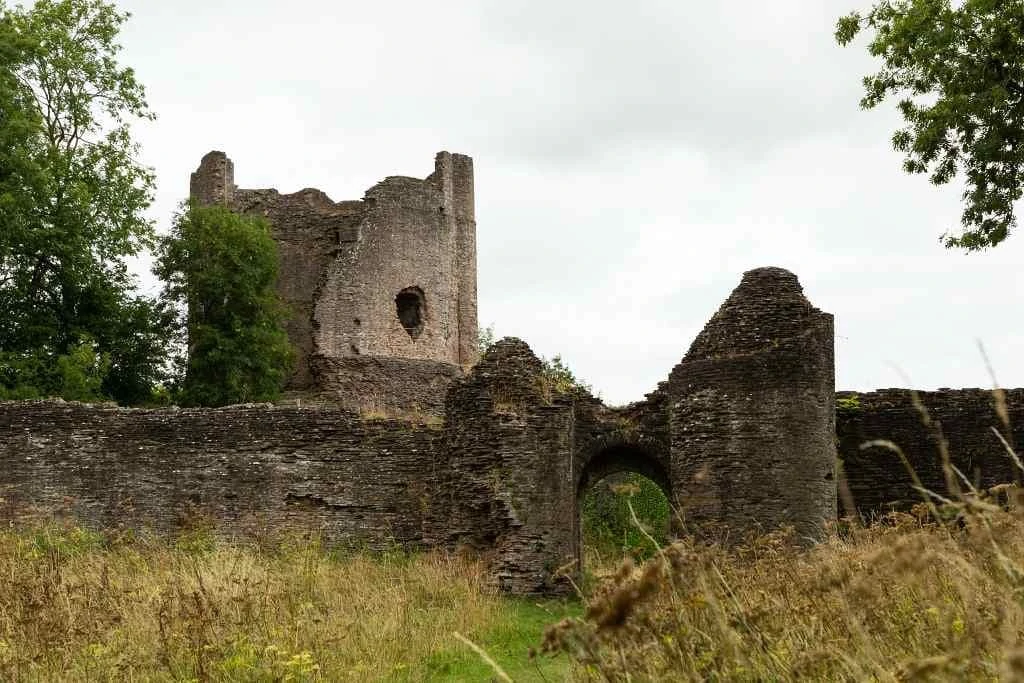
Founded by Walter de Lacy in the 1180s on top of Roman earthworks, Longtown Castle was originally known as Ewiah Lacey Castle. Built as a classic motte and bailey castle close to the Welsh border, it was fortified during the 12th century.
Little but the 35 feet high motte and the ruined gatehouse remain of the castle today; however, take note when you drive into the Medieval town as the minor road cuts through what would have once been the outer baileys.
Where: Longtown, Herefordshire
Opening Times: Yes, click here for more information.
Check out more castles in Herefordshire.
19. Tamworth Castle
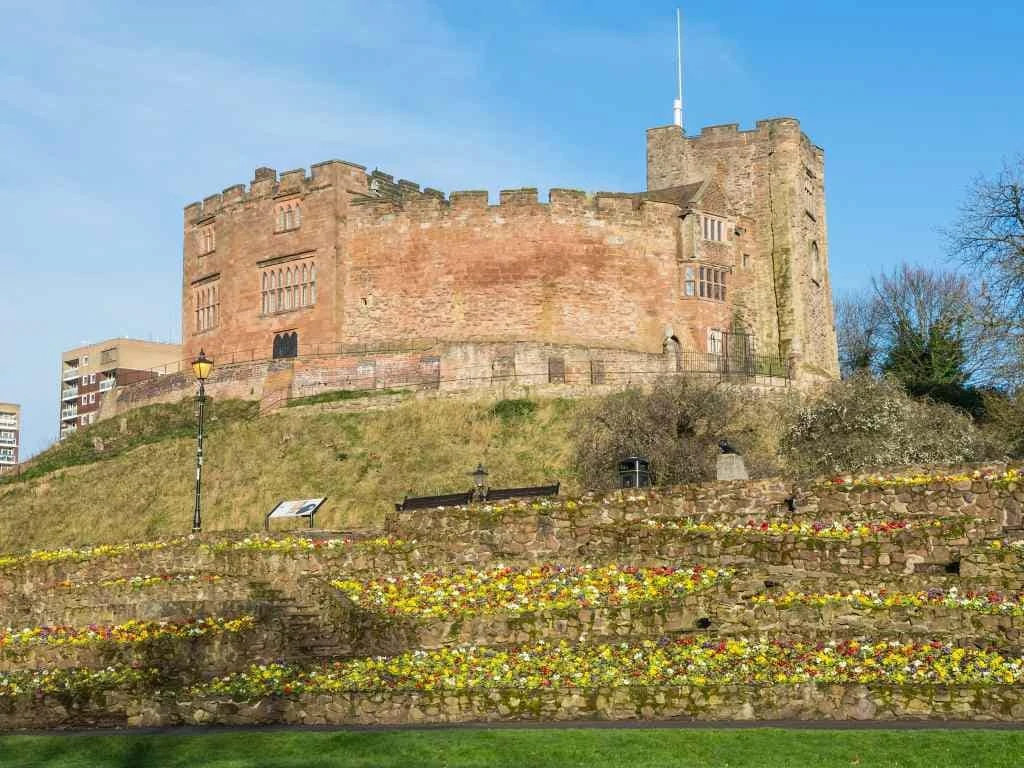
Founded by nobleman Robert le Dispenser, the main steward of William the Conqueror, Tamworth Castle was built soon after the Norman Conquest, sometime around 1070, at the South-west corner of the prosperous Saxon town as an earth and timber motte and bailey castle.
Later inherited by Robert Marmion and built from stone using the same footprint as the earthworks castle, it remained in possession of the Lords of Marmion for the next 200 years.
Where: Tamworth, Staffordshire
Open for visit: Yes, check here for more information.
Click here for more castles to visit in Staffordshire.
20. Dudley Castle
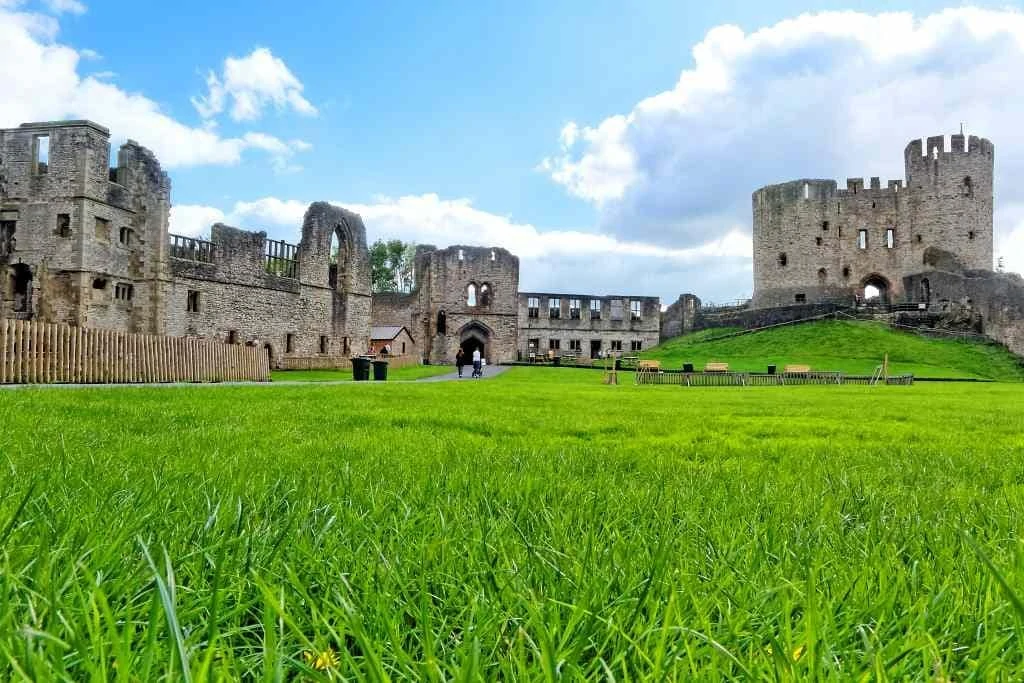
Founded by Ansculf de Picquigny around 1070, shortly after the Norman Conquest, Dudley Castle was originally an earth and timber motte and bailey castle, rebuilt in stone during the 12th century by the Paganel family, who became Lords of Dudley. However, the castle was demolished on the orders of King Henry II, the castle ruins seen today date from the 13th century though visitors can still see the 9 meters high Norman motte.
Where: Dudley, West Midlands
Opening Times: Now part of Dudley Zoo.
21. Conisbrough Castle

Founded by the Earl of Surrey, William de Warenne, soon after the Battle of Hastings on a Saxon settlement, it is unknown whether the earth and timber structure of Conisbrough Castle took the form of a classic motte and bailey castle or a ringwork fort.
However, we do know that it was part of a network of Norman fortresses built to protect Yorkshire and the North, later rebuilt in stone and becoming the property of the Dukes of York.
Where: Conisbrough, Doncaster, South Yorkshire
Open for visit: Yes, check here for more information.
22. Windsor Castle
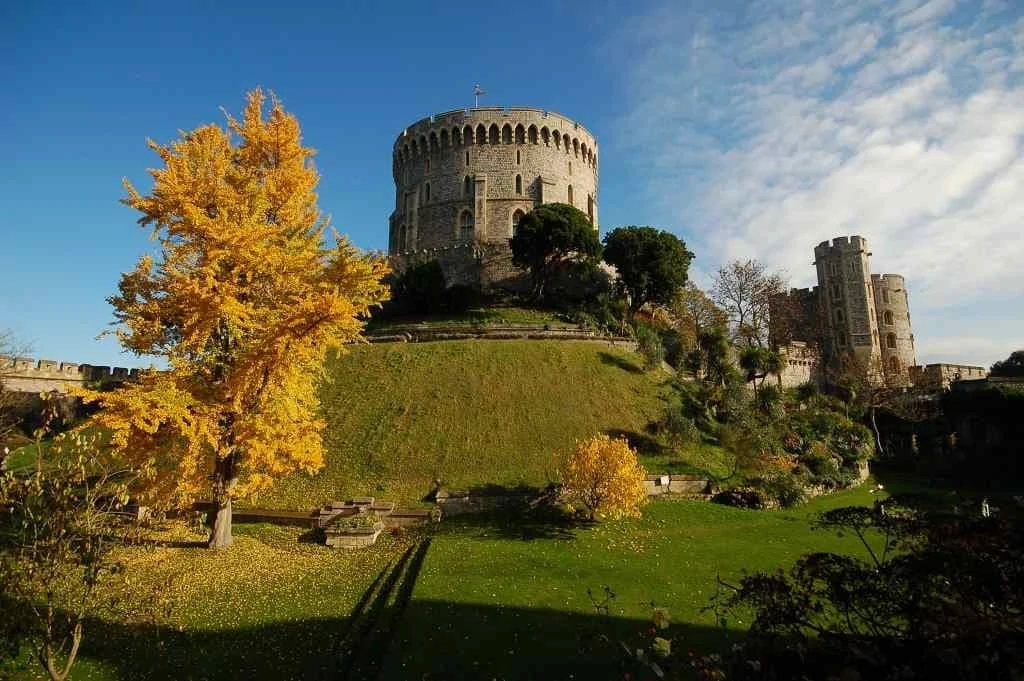
William the Conqueror built Windsor Castle on the edge of a Royal Saxon hunting ground in 1070; the earth and timber castle took 16 years to build, with its double bailey and motte in between.
The Round Tower that we see today would have been the Norman Keep prior to 1170. Built to protect the Western approach to London, Windsor was the ideal location for a Royal residence, becoming a palace made from stone in the 12th century but mostly keeping its original layout due to the confines of the surrounding town.
Where: Windsor, Berkshire
Open for visit: Usually open daily, but closures can happen at short notice – Check the website ahead of time for exact opening times.
Click here to book your tickets to Windsor Castle
23. Warwick Castle

Warwick Castle was founded in 1068 by Henry de Beaumont (who would later become Henry de Newburgh, Earl of Warwick) for William the Conqueror.
He ordered an earth and timber motte and bailey castle to be built on a bend of the River Avon on the site of an Anglo-Saxon fortified town where an even older Roman Fort had once stood.
Warwick Castle was later rebuilt in stone by John de Plessis in the 12th century and went on to take center stage in the Baron’s War and War of the Roses.
Where: Warwick, Warwickshire
Open for visit: Yes. Check here for more information.
Click here to book your tickets to Warwick Castle.
24. Tower of London
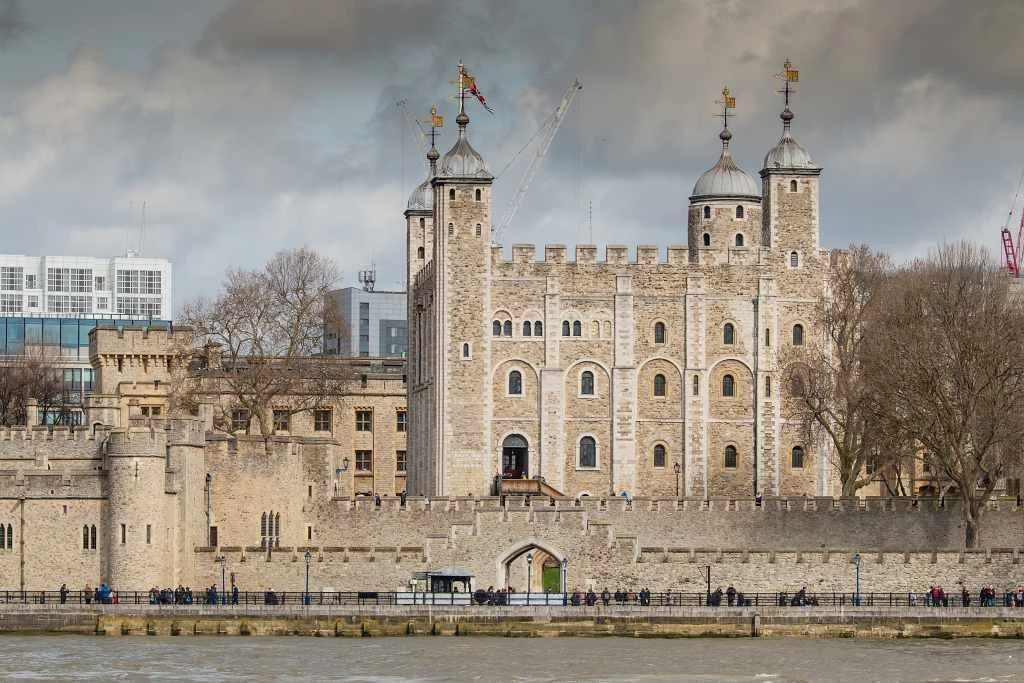
Founded at the end of 1066 when William the Conqueror started construction of his symbolic White Tower soon after his coronation at Westminster Abbey, the iconic Tower of London became William’s greatest fortress.
Thought to have been built on the site of an old Roman city wall, white stone for the build was imported from Caen in Normandy with Gundulf, the Bishop of Rochester, underseeing the 20–year construction. Today, visitors to the White Tower will find London’s oldest surviving Norman church, St John’s Chapel, within the iconic white walls.
Where: City of London
Open for visit: Yes. Check here for more information.
Click here to book your tickets to the Tower of London.
25. Hedingham Castle
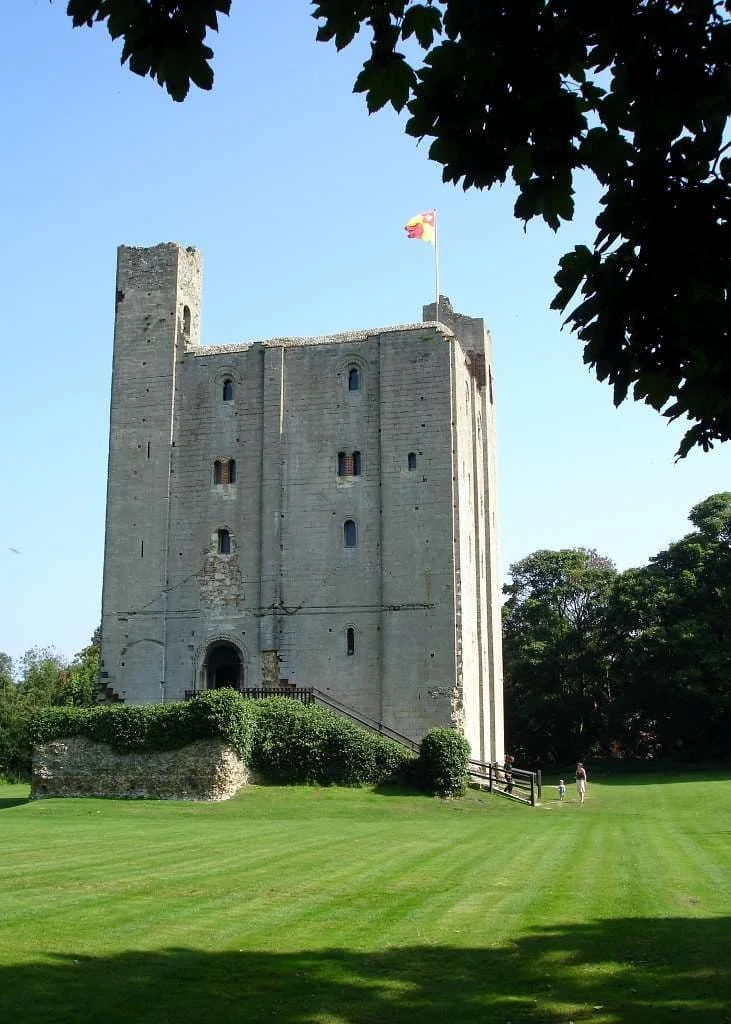
Hedingham Castle is one of the best preserved Norman keeps in England. Built around 1140 by Aubrey de Vere III, the keep sits on an earth ringwork.
The inner bailey houses an 18th-century mansion, while the outer bailey once extended into the village. A granary, defensive walls, stables, and towers complemented the 900-year-old keep.
Today, Castle Hedingham is a popular venue for weddings. You can visit the beautiful gardens, the mansion, and the keep, and the owners even offer an escape room experience for visitors.
Where: Castle Hedingham, Essex
Open for visit: Yes. – Check the website for details.
FAQs about The Best Norman Castles in England
Of the 90 Norman castles that still exist in England, the best Norman castles are Pevensey Castle in East Sussex, Dover Castle in Kent, Alnwick Castle in Northumberland, Windsor Castle in Berkshire, and the Tower of London in the City of London.
Located in East Sussex, Pevensey Castle was the first castle William the Conqueror built after landing with his troops in 1066 in England. He made use of an older Roman fortification and initially built a temporary castle to shelter his troops.
Colchester Castle in Essex has the largest Norman keep built in England. It is not only the largest Norman castle but also one of the three original castles of William the Conqueror.
90 Norman castles still exist today. Among them, the Tower of London, Windsor Castle, Durham Castle, Norwich Castle, Pevensey Castle, and Oxford Castle are the most famous.

If I lived in the middle ages, 1155-1180 would be an ideal time. I would probably explore all the amazing stone castles.